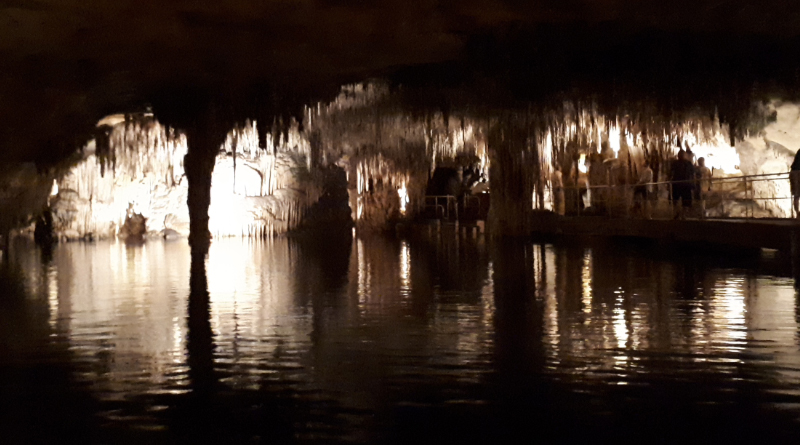MALLORCA’S CAVES OF DRACH
I love caves; the thought that these incredibly beautiful places, filled with ‘sculptures’ that have taken millennia to form, are hidden, unseen below our feet, fills me with a sense of awe. Awe at the power of nature and the secrets she hides all around us.
So, whenever I have the chance, I will visit a cave!
Recently I was in Mallorca, and that meant a trip to the Caves of Drach. The caves form part of the Serra de Llevant of Mallorca and are situated on the eastern side of the island near Porto Cristo. They are around 25m deep and over 4km long and made up of four interconnecting caves. Formed around 11million years ago in the Tertiary Period of the late Miocene they were first mentioned in a letter in the early 1300s, but archaeological evidence suggests that were used by settlers as far back as 3000 years ago. The caves attracted little attention until the 1880s when German explorer M.F. Will mapped the White and Black caves and then in 1896 French scientist Édouard-Alfred Martel found two more caves and an underground lake.
In the early 1900s a new entrance was created and the caves were opened to the public. Today 1000s of people visit each year. The tour takes about an hour and ends with a classical concert, where the musicians perform from within a boat on the Martel Lake – one of the largest known underground lakes.

A tour through the caves is like a walk through an underground art gallery: giant stalagmites and stalactites in a variety of shapes and sizes; rippled flags so fine the light shines through them; wedding cakes with solid rock icing pouring off them; rebel formations that seem tto defy gravity; pencil thin soda straws hanging from the ceiling; and the famous snow-capped mountain formation.
But among the beauty is also a sadness. Many of these formations are now dead. If humans had never touched them, each would have continued to grow, drip by drip, millimetre by millimetre over eons. But one touch from us, and the grease on our skin, and the growth is stopped. Never to start again.
Unfortunately, that isn’t the worst of the damage we’ve inflicted on this hidden treasure. Over time, and I guess before we knew any better, visitors have snapped off many of the stalactites and stalagmites, taking them home as a ‘souvenir’. And there they lie collecting dust in boxes where they will never again be appreciated in their natural environment. Their growth has been stopped and Nature’s millennia old gallery has had many if its treasures ransacked.
There is nothing we can do about the caves we’ve already explored and, in many cases, defaced, but we can stop any further damage and ensure we respect the caves we visit. Just as you wouldn’t reach out the stroke the face of the Mona Lisa or try to grab a corner of the canvas to take home with you; when visiting a cave don’t touch and don’t steal.
If you’d like a souvenir of your visit, take photos, and then stop by the gift shop on your way out.
The Caves of Drach are a wonderful experience, and the concert and boat trip on the lake are a fun addition to the tour – so leave them as you find them and keep them safe for future generations to enjoy.
FACT BOX
Caves of Drach – http://www.cuevasdeldrach.com/en/
Mallorca Tourist Information – http://www.infomallorca.net/?lg=en
 ABOUT THE AUTHOR
ABOUT THE AUTHOR
Chantal Cooke is an award-winning journalist and broadcaster and co-founder of PASSION for the PLANET. Chantal is passionate about tourism being used as a force for good. You can follow her adventures on Facebook and Twitter @chantalcooke and on Instagram @Chantaldcooke

